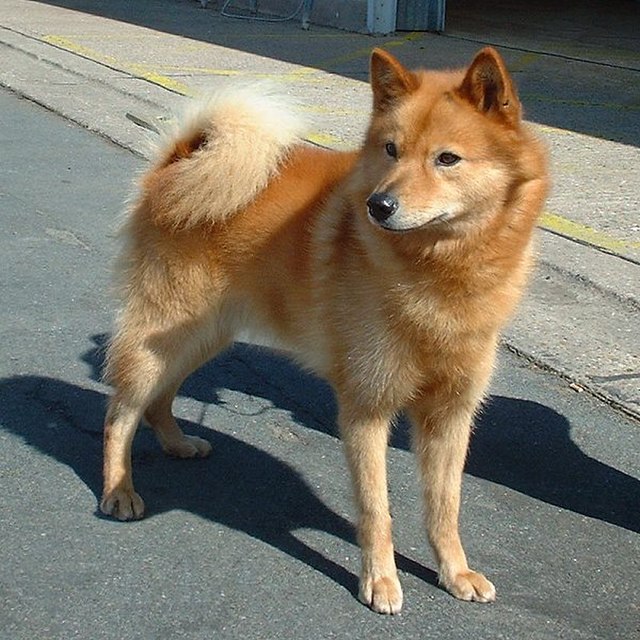


The Finnish Spitz is a small to medium-sized breed that hails from Finland. Known for its striking red-gold coat and fox-like appearance, the Finnish Spitz is a lively and agile dog. It was originally bred for hunting small game, such as birds, and is also recognized for its distinctive "barking" style of hunting. The breed is energetic, alert, and independent, making it an excellent companion for active individuals or families.
The Finnish Spitz has a long history that dates back over 2,000 years. It was developed in Finland to hunt game birds and small mammals, particularly the forest birds found in the region. The breed’s most famous task was to act as a "barking bird dog," alerting its hunter to the location of birds by barking loudly. These dogs were essential for hunting, and their appearance and behavior were honed over centuries to perform this job. The Finnish Spitz was recognized by the American Kennel Club (AKC) in 1988 and is the national dog of Finland.
The Finnish Spitz has a fox-like appearance, with a bushy tail that curls over its back. Its coat is dense and straight, with a soft undercoat and longer guard hairs, often a striking reddish-gold color, though variations of the coat include shades of golden, red, or even darker hues. The breed has pointed ears and a wedge-shaped face. Typically, Finnish Spitz dogs weigh between 20 to 28 pounds (9 to 13 kg) and stand about 17 to 20 inches (43 to 51 cm) tall at the shoulder.
Finnish Spitz dogs are friendly, energetic, and independent. They are known for their alertness, which makes them excellent watchdogs. Despite their independent nature, they are affectionate with their families and can form strong bonds. They are typically good with children and other dogs, although they may be more reserved with strangers. Their strong prey drive means they may be inclined to chase small animals, so supervision is recommended when outdoors.
The Finnish Spitz is a highly energetic breed that requires regular exercise to stay happy and healthy. Daily walks, runs, and playtime are essential to keep them physically and mentally stimulated. This breed enjoys activities such as hiking and agility training, and they excel in environments that allow them to explore and burn off excess energy. Due to their strong hunting instincts, they may require a secure, fenced area to run freely.
Training a Finnish Spitz requires patience, consistency, and positive reinforcement. While they are intelligent, they can also be independent and somewhat stubborn, so early socialization and obedience training are important. These dogs respond best to gentle, positive training methods rather than harsh corrections. Socialization with other dogs, animals, and people should begin early to help the dog develop a well-rounded and confident temperament. Their alertness and sensitivity make them quick to respond to their environment, so proper training is key to managing their instincts.
The Finnish Spitz is generally a healthy breed with few genetic health issues. However, like all dogs, they may be prone to some conditions, such as hip dysplasia, hypothyroidism, and eye problems. Regular vet check-ups, a balanced diet, and adequate exercise are essential to maintaining their health. Their thick double coat requires regular brushing to prevent matting and to reduce shedding, especially during the shedding seasons (spring and fall). Bathing should be done as needed, but over-bathing should be avoided to preserve the natural oils in their coat.
The average lifespan of a Finnish Spitz is around 12 to 15 years. With proper care, many Finnish Spitz dogs live well into their teens. Regular exercise, a healthy diet, and routine vet visits are important to ensure that they live a long, healthy life.
© copyright Dog Compendium 2024 - 2025